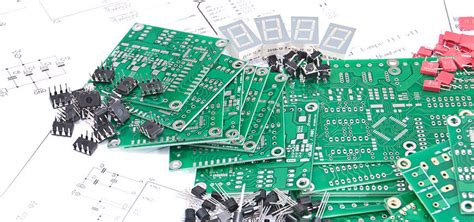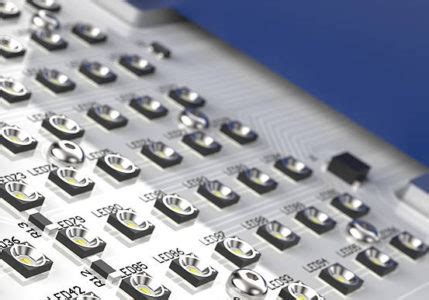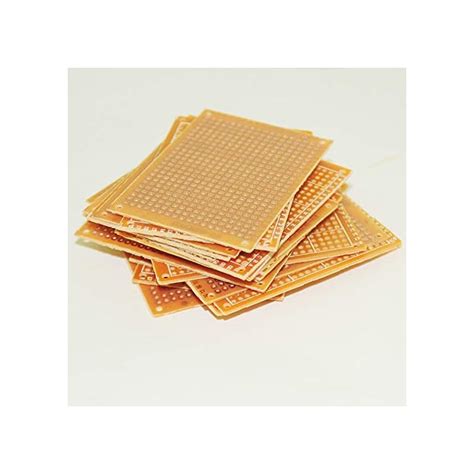Mastering Circuit Board Assembly: A Step-by-Step Guide
Key Takeaways
Understanding the essentials of pcb assembly is crucial for anyone looking to engage in efficient and successful pcba practices. This process requires not only the appropriate knowledge but also familiarity with specific tools and techniques that facilitate effective assembly. Key components of a successful assembly include selecting high-quality components, maintaining a clean workspace, and using precise soldering techniques to avoid common pitfalls that could jeopardize the integrity of the circuit board. Each step in the circuit board assembly process contributes to the overall reliability of electronic performance, which is vital for both amateur hobbyists and seasoned professionals. Additionally, staying abreast of industry standards and employing best practices can streamline assembly, reducing time spent while increasing the quality of work produced. By honing these skills and understanding the fundamentals, individuals can enhance their competency in pcb assembly, ultimately leading to greater success in their electronic projects.
Introduction to Circuit Board Assembly
Circuit board assembly, often referred to as pcb assembly or pcba, is a fundamental process in the manufacturing of electronic devices. This process involves the meticulous placement and soldering of electronic components onto a printed circuit board (PCB), which serves as the backbone for an electronic product. Whether for consumer electronics, industrial machinery, or advanced telecommunications equipment, mastering pcb assembly is crucial for ensuring optimal functionality and performance.
In this guide, we will explore the intricate steps and techniques essential for effective pcba. Understanding the composition of materials and employing the appropriate methods can significantly enhance both efficiency and reliability in electronic performance. For instance, selecting high-quality components can minimize issues during assembly and improve the durability of the final product.
To facilitate your learning process, here’s a simple table that illustrates key components commonly found in circuit assemblies:
| Component | Function |
|---|---|
| Resistor | Limits current flow |
| Capacitor | Stores electrical energy |
| Inductor | Resists changes in current |
| Integrated Circuit | Combines multiple functions into one unit |
As we delve deeper into this guide, you will encounter various expert tips that can help streamline your circuit board assembly efforts. For example, it’s often beneficial to prepare a clean workspace and organize your tools before commencing any assembly tasks.
“A well-prepared environment can significantly reduce errors and increase productivity during pcb assembly.”
By approaching pcba with an understanding of these principles, one can achieve superior results that stand up to rigorous performance standards in any electronic application.
Essential Tools and Materials Needed
When embarking on the journey of pcb assembly, having the right tools and materials is crucial for a successful pcba project. First and foremost, a quality soldering iron is essential, as it allows for precise application of heat when connecting components to the circuit board. In addition to the soldering iron, you’ll need solder wire—typically made from a mixture of tin and lead or lead-free alternatives—to create strong electrical connections. A pair of tweezers is invaluable for handling small components with precision without risking damage to delicate parts or your board.
Moreover, a good set of wire strippers and cutter pliers will be necessary for preparing wires and leads before they are soldered onto the board. Safety goggles are also recommended to protect your eyes from any small flying particles during assembly, ensuring that you maintain a safe working environment.
Don’t forget about your workspace; having an anti-static mat helps in preventing any potential electrostatic discharge (ESD) damage to sensitive components during the pcb assembly process. Lastly, organizing your materials with component trays can boost efficiency by keeping everything you need within reach and reducing the potential for misplaced items during assembly.
Overall, gathering these essential tools not only streamlines the process but also contributes significantly to achieving reliable electronic performance through effective pcba techniques.

Step-by-Step Process of Circuit Board Assembly
The process of pcb assembly involves several critical steps that ensure the successful integration of electronic components onto a printed circuit board (PCB). Initially, you should begin by preparing the pcba surface, ensuring it is clean and free from contaminants. This preparation is vital for optimal adhesion of components. Next, layout and design files should be meticulously checked to prevent any discrepancies during assembly. Once verified, you can proceed with placing the components; using a pick-and-place machine can significantly enhance accuracy and efficiency.
After placement, the soldering process comes into play. This is typically accomplished using either wave soldering or reflow soldering techniques, depending on whether the components are through-hole or surface-mounted. A heat source will effectively melt the solder, creating reliable electrical connections. Following soldering, it’s crucial to perform visual inspections or automated optical inspections to identify potential defects early in the pcb assembly process.
Subsequent testing phases involve functionality and integrity tests to ensure every component operates as intended within the circuit. This stage may include in-circuit testing (ICT) and functional testing, which are essential for verifying that the final product meets quality standards. Documenting every step can aid in troubleshooting future issues and improving overall assembly efficiency.
In summary, mastering each aspect of this step-by-step process not only streamlines pcb assembly but also significantly contributes to ensuring that your electronic devices perform reliably under various conditions. By following these systematic procedures, even complex assemblies can be executed with precision and skill.

Common Challenges and Troubleshooting Tips
When engaging in pcb assembly, newcomers often encounter several hurdles that can impede their progress. One prevalent challenge is dealing with misaligned components. This setback can lead to poor connections or even complete failure of the assembly. To mitigate this issue, it’s critical to use a reliable fixture during the assembly process that keeps the components in place. Another common concern is soldering issues, such as cold joints or solder bridges that can compromise the functionality of the pcba. Ensuring that the soldering iron is at the correct temperature and applying solder uniformly can prevent these problems. Additionally, troubleshooting failed circuits can be daunting for many assemblers; however, employing systematic testing techniques using a multimeter can help identify defective components or opened circuits early on. Lastly, practitioners should not overlook the importance of maintaining a clean workspace; contaminants like dust or oil can adversely affect both component placement and solder quality. By anticipating these challenges and being equipped with practical troubleshooting tips, you can enhance your skills in circuit board assembly and improve overall efficiency in your projects.

Best Practices for Efficient Assembly
When undertaking pcb assembly or pcba, establishing a set of best practices can greatly enhance the efficiency and quality of the process. First and foremost, organization is key. Keeping all tools and materials readily accessible minimizes downtime and fosters a more streamlined workflow. Arranging components logically by type or function aids in reducing errors during assembly. Additionally, utilizing regular updates to your work area can create a more pleasant environment, which may positively influence focus and productivity.
Moreover, implementing a clean workstation free of unnecessary clutter is crucial to prevent contaminants from affecting the quality of the circuit board assembly. It’s also beneficial to conduct initial inspections of all components before starting; by ensuring that components are in working order right from the outset, you’ll save time later on that might otherwise be spent troubleshooting failures during testing phases.
Another best practice is utilizing static-free work surfaces and grounding techniques to safeguard sensitive components against electrostatic discharge. Following a systematic assembly process helps in maintaining consistency across different batches of pcba, which can be particularly beneficial for larger projects requiring multiple identical units. Lastly, continuous learning through workshops or courses on PCB techniques will equip assemblers with updated knowledge and skills, allowing them to refine their approaches and adopt new technologies as they emerge within this ever-evolving field.

Ensuring Reliability in Electronic Performance
In the realm of pcb assembly, ensuring the reliability of electronic performance is paramount for product longevity and functionality. A key aspect to achieving this is through meticulous attention to detail during the pcba process. Proper alignment, soldering methods, and component placement play significant roles in minimizing potential issues. It’s crucial to select high-quality materials that can withstand operational stresses, including temperature variations and electrical loads. Additionally, conducting thorough inspections at each stage of assembly can preempt reliability concerns—implementing techniques such as Automated Optical Inspection (AOI) can enhance detection of defects early on in the show quality assurance process. Another essential element is adhering to industry standards; compliance ensures that the assembled circuit boards will function reliably under specified conditions. Overall, focusing on these foundational practices during pcb assembly helps fortify the electronic devices’ performance, ultimately leading to more robust and dependable products in the market.
Advanced Techniques for Experienced Assemblers
For those with a solid foundation in pcb assembly, incorporating advanced techniques can significantly enhance both efficiency and precision in the pcba process. One effective method is to utilize wave soldering for large batches, which drastically reduces the time needed for soldering compared to manual methods. Additionally, leveraging automated assembly machines can ensure that components are placed accurately and consistently, minimizing the risks associated with human error.
Incorporating surface mount technology (SMT) can also improve layout efficiency; by allowing components to be mounted directly onto both sides of the circuit board, it enhances space utilization and reduces overall board size. For assemblies that require high performance or durability, consider implementing conformal coatings post-assembly. These coatings not only protect against moisture but also resist contaminants, thereby ensuring longevity and reliability of electronic performance.
Moreover, advanced troubleshooters frequently advocate for the use of thermal imaging cameras during the assembly process. By identifying hotspots or cold joints before final assembly, issues can be resolved proactively rather than reactively—streamlining production and boosting overall success rates.
Finally, participating in continual education through workshops or certifications focused on pcba methodologies will keep assemblers abreast of industry trends and innovations. This investment in knowledge not only enhances personal skill sets but contributes significantly to team standards and operational excellence within organizations engaged in circuit board assembly technologies.
Conclusion and Further Resources
In summary, mastering pcb assembly is a crucial skill for anyone involved in the electronics industry, whether you are a hobbyist or a professional. By following the steps outlined in this guide, you can enhance your skills in pcba and ensure that your projects achieve optimal performance. The essential techniques discussed, such as selecting the right components and employing effective soldering methods, not only contribute to a successful assembly but also improve the reliability of electronic devices. As you gain experience, don’t hesitate to explore advanced techniques that can further refine your process. To deepen your understanding, consider engaging with online forums or local workshops where you can connect with fellow enthusiasts and experts. By staying informed about new tools and industry standards, you can continuously improve your circuit board assembly capabilities and remain at the forefront of technological advancements.
Conclusion
In the world of pcb assembly, mastering the techniques and processes discussed is vital for anyone looking to excel in this field. From gathering the right tools and materials to implementing best practices, each step in the pcba process contributes significantly to the overall performance and reliability of electronic devices. Challenges may arise, but with a solid understanding of troubleshooting tips and advanced techniques, assemblers can navigate obstacles effectively. It’s essential to continually refine your skills and stay updated with the latest industry standards. As you embark on this journey, remember that a commitment to quality and precision will not only enhance your assembly competency but will also elevate the performance of the final product. Keep exploring resources and community forums, as knowledge sharing among peers can propel your capabilities even further in circuit board assembly.
FAQs
Q: What is PCB assembly (PCBA)?
A: PCB assembly, or Printed Circuit Board Assembly (PCBA), refers to the process of putting together various electronic components onto a circuit board. This involves techniques such as soldering, surface mount technology, and through-hole mounting.
Q: What tools are essential for PCB assembly?
A: Essential tools for PCB assembly include a soldering iron, tweezers, wire cutters, and a multimeter. Additionally, having a cleaner for flux residue and an anti-static wrist strap is important to ensure safe handling of components.
Q: How can I ensure reliability in my PCB assembly projects?
A: To ensure reliability in your projects, consider following best practices during the soldering process, such as maintaining consistent temperatures and using adequate cooling methods. Moreover, regularly inspecting your assemblies for visual defects can mitigate potential issues.
Q: What challenges might I face during PCBA?
A: Common challenges in PCB assembly include misalignment of components, inadequate solder connections, and the risk of static damage to sensitive parts. Recognizing these challenges in advance can help you prepare appropriate troubleshooting strategies.
Q: Where can I find more resources on circuit board assembly?
A: For additional resources on circuit board assembly, please visit this link: Andwin PCB Assembly. It provides extensive information and guides that can enhance your understanding and skills in PCBA processes.







